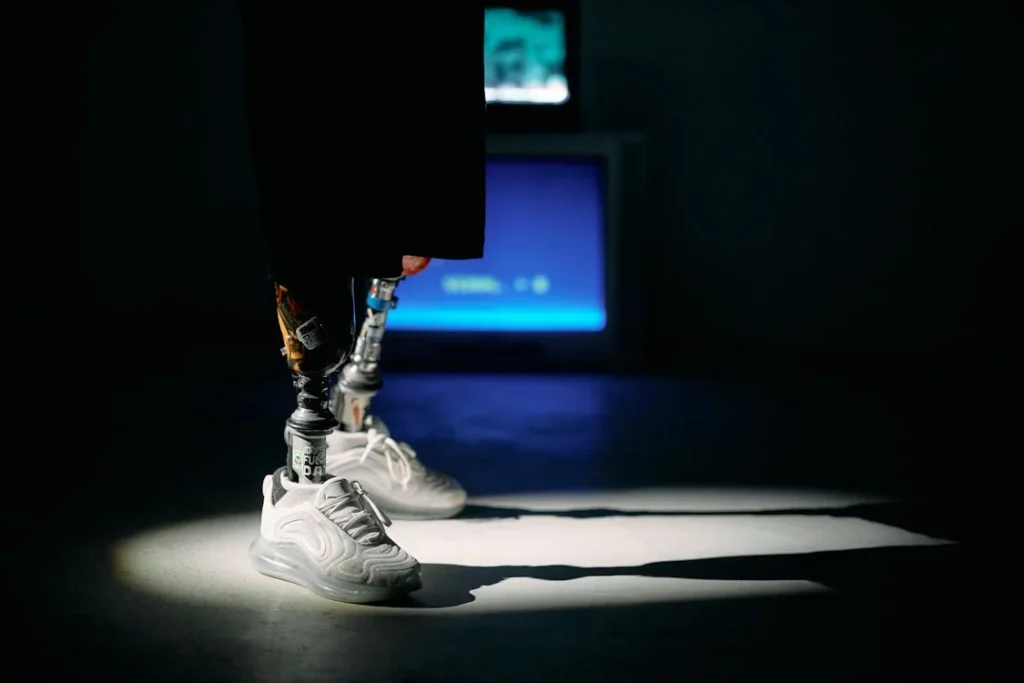Making homes, workplaces, and public spaces more accessible is essential for people with disabilities, but the cost of modifications can be high. Ramps, widened doorways, stairlifts, accessible bathrooms, and assistive technologies all require financial investment. Fortunately, many government programs provide funding to support these modifications, making it easier for individuals to live independently and participate fully in society.
Understanding how to access these funds can feel overwhelming, especially with all the paperwork, eligibility requirements, and application processes involved. However, with the right information and guidance, securing government funding for accessibility modifications can be much simpler.

Understanding Government Funding for Accessibility
Government funding for accessibility modifications is designed to help individuals with disabilities make necessary changes to their homes, workplaces, and public spaces.
These programs exist to ensure that people with mobility challenges, sensory impairments, or other disabilities can move freely and safely in their environment.
However, the type of funding available, the eligibility criteria, and the application process can vary depending on where you live.
In many countries, government funding for accessibility falls under disability support programs, housing assistance, or social welfare initiatives.
Some programs provide direct financial assistance, while others offer subsidies, grants, or tax benefits. Understanding these options is the first step in securing the support you need.
Who Qualifies for Accessibility Funding?
Most government funding programs have specific eligibility criteria. Typically, these programs are available to individuals with disabilities, senior citizens, or families who need to modify their homes for an individual with a disability.
Some programs also offer support to businesses and landlords who want to make their properties more accessible.
Eligibility is usually based on medical documentation, proof of disability, and income level. Some programs prioritize applicants with lower incomes, while others provide funding to anyone who meets the medical criteria.
If you are unsure whether you qualify, it’s always best to check with the government agency responsible for the program.
What Modifications Can Be Covered?
Government funding can cover a wide range of accessibility modifications. Some of the most common modifications include:
- Installing ramps and stairlifts to improve mobility in and out of the home.
- Widening doorways and hallways to accommodate wheelchairs.
- Modifying bathrooms with grab bars, roll-in showers, and raised toilets.
- Installing smart home technology such as voice-activated controls and automated lighting.
- Lowering kitchen counters and cabinets for easier access.
- Improving workplace accessibility through adaptive furniture and assistive devices.
Some programs also provide financial assistance for prosthetics and mobility aids, such as robotic prosthetic hands like Grippy™ by Robobionics, which enhances independence and functionality for users.
If your accessibility needs extend beyond home modifications, be sure to check whether assistive devices are included in the funding program you are applying for.
How to Identify the Right Funding Program
Every country, state, or region has different funding programs, and finding the right one can take some research. The best place to start is by visiting the official website of your local government or disability affairs department.
Many governments have dedicated portals where they list available grants, subsidies, and financial assistance for accessibility modifications.
If you are in India, the Sugamya Bharat Abhiyan (Accessible India Campaign) offers support for accessibility projects, particularly in public buildings and workplaces.
The National Handicapped Finance and Development Corporation (NHFDC) also provides financial assistance for individuals with disabilities. Similarly, other countries have their own funding bodies dedicated to supporting accessibility improvements.

How to Apply for Government Funding
Once you have identified the right government program for accessibility funding, the next step is the application process.
While the exact requirements vary depending on your location and the type of assistance you are seeking, most funding programs follow a similar structure. Understanding what to expect can help you navigate the process smoothly and improve your chances of approval.
Gathering the Required Documents
Before applying, it is essential to collect all necessary documents. Most government programs require proof of disability, which can be obtained from a doctor or a certified medical professional.
This document should clearly state the nature of the disability and how the requested modifications will improve accessibility.
Additionally, you may need to provide proof of residency, proof of income, and property ownership documents if you are applying for home modifications.
If the modifications are for a workplace or business, you may need additional paperwork, such as proof of employment or business registration.
In some cases, government agencies may ask for quotes or estimates from contractors who will perform the modifications.
This helps them assess the cost and ensure that the requested funds are being used appropriately. It is a good idea to get multiple quotes from licensed contractors to increase your chances of approval.
Writing a Strong Application
A well-prepared application can make a significant difference in securing funding. When filling out the forms, be clear and specific about why you need accessibility modifications. Explain how the changes will improve your quality of life, independence, and safety.
For example, instead of simply stating, “I need a ramp for my house,” provide details about how a ramp will allow you to enter and exit your home without assistance, reducing the risk of falls and improving overall mobility.
If you are requesting funding for assistive devices like Grippy™, explain how the prosthetic hand will enable you to perform daily tasks independently.
If possible, include a letter from a healthcare professional, therapist, or disability advocate who can support your request. Their endorsement can add credibility to your application and demonstrate the necessity of the modifications.
Understanding the Review Process
After submitting your application, the government agency will review it to determine if you meet the eligibility criteria. This process may take several weeks or even months, depending on the program and the number of applicants.
Some funding programs may require an inspection of your home or workplace before approving the modifications.
Officials may visit the property to assess the existing accessibility challenges and confirm that the requested changes are necessary. Being prepared for this inspection can help speed up the approval process.
Once approved, you will receive either direct financial assistance or reimbursement for expenses. Some programs may pay contractors directly, while others may require you to cover the costs upfront and submit receipts for reimbursement.
Understanding how funds are disbursed will help you plan your expenses accordingly.

Overcoming Challenges in the Funding Process
Securing government funding for accessibility modifications can sometimes be challenging. Long wait times, complex paperwork, and eligibility restrictions can create obstacles for individuals who urgently need financial assistance.
However, with patience, persistence, and the right approach, these challenges can be overcome.
Dealing with Application Delays
One of the most common frustrations in the funding process is the time it takes for applications to be reviewed and approved. Government agencies often receive a large number of applications, which can slow down processing times.
To avoid unnecessary delays, ensure that all required documents are submitted correctly and completely. Missing paperwork or incomplete forms can cause significant setbacks.
If you find that your application is taking longer than expected, follow up with the agency responsible for processing your request. Many government offices have helplines or case managers who can provide updates on your application status.
Politely requesting information and ensuring your file is progressing can sometimes expedite the process.
In urgent cases, you may want to explore temporary solutions while waiting for funding approval. Some nonprofit organizations provide short-term financial aid for individuals in need of immediate accessibility modifications.
Additionally, crowdfunding platforms have become a popular way for people to raise funds for home modifications, prosthetics, and assistive technology.
What to Do If Your Application Is Denied
Receiving a denial letter can be discouraging, but it does not mean that you are out of options. First, carefully review the reason for the rejection.
Some applications are denied due to missing documents, incorrect information, or not meeting specific eligibility requirements. In many cases, reapplying with corrected or additional information can lead to a successful outcome.
If you believe your application was unfairly rejected, you may have the option to appeal the decision. Many government programs have an appeals process that allows applicants to submit additional evidence and request a reconsideration.
Seeking help from a disability advocate, social worker, or legal aid service can improve your chances of overturning the decision.
Sometimes, funding programs run out of money before all eligible applicants can receive assistance. If this happens, you may need to wait until the next funding cycle or explore alternative sources of financial aid.
Some organizations and charitable foundations provide grants for accessibility improvements, and local government offices may have additional resources that are not widely advertised.
Working with Contractors and Service Providers
Once your funding is approved, the next step is choosing the right contractor or service provider to complete the modifications. It is essential to work with professionals who have experience in accessibility improvements.
A contractor who specializes in installing ramps, stairlifts, and bathroom modifications will likely provide better results than a general contractor with no prior experience in disability accommodations.
Before starting any work, review the terms of your funding approval carefully. Some government programs require that you use pre-approved contractors or follow specific guidelines to ensure compliance with accessibility standards.
Failing to meet these requirements could result in funding delays or reimbursement issues.
Getting multiple quotes from contractors can also help you stay within budget and ensure that you receive the best quality service. Make sure to ask for references and check reviews to ensure the contractor is reliable and experienced in accessibility modifications.

Alternative Funding Sources for Accessibility Modifications
While government funding is often the first option for many people seeking financial assistance for accessibility modifications, it is not the only one.
There are several alternative sources of funding that can help cover the costs of home modifications, assistive devices, and mobility aids.
Exploring these options can provide additional financial relief, especially if government funding is delayed or unavailable.
Nonprofit Organizations and Disability Charities
Many nonprofit organizations provide grants, low-interest loans, or direct assistance for individuals with disabilities who need accessibility modifications.
These organizations often work in partnership with local governments, businesses, and donors to fund accessibility projects.
Some charities focus on specific disabilities, such as mobility impairments or visual impairments, while others provide general support for individuals with any type of disability.
For example, international organizations like the Christopher & Dana Reeve Foundation offer grants for home modifications and adaptive equipment for individuals with spinal cord injuries.
Similarly, the Lions Clubs International provides funding for people with vision impairments to install assistive technology in their homes.
In India, organizations such as the National Centre for Promotion of Employment for Disabled People (NCPEDP) advocate for accessibility improvements and provide financial aid for workplace modifications.
Reaching out to these organizations can be a valuable step in securing financial assistance. Many have application processes similar to government programs, requiring medical documentation and proof of financial need.
However, they may offer more flexibility in funding eligibility, making it easier for applicants who do not qualify for government aid.
Corporate Accessibility Initiatives
Some companies and corporations run accessibility programs as part of their corporate social responsibility (CSR) initiatives. Large businesses often partner with disability organizations to fund home modifications, adaptive sports programs, and workplace accessibility improvements.
Tech companies, for example, have been leading the way in making assistive technology more accessible. Companies like Microsoft and Google offer financial aid for individuals who need specialized software, voice-activated devices, or screen readers.
Some home improvement companies also offer discounted services or financial assistance for installing ramps, stairlifts, and other modifications.
If you work for a company that values diversity and inclusion, it may be worth asking whether they have any employee assistance programs for accessibility needs.
Some businesses provide financial support for home modifications if an employee or their family member requires accessibility improvements.
Disability Insurance and Government-Backed Loans
In addition to grants and subsidies, some individuals may be eligible for financial assistance through disability insurance or government-backed loan programs.
Disability insurance policies, whether private or provided through an employer, sometimes cover accessibility modifications if they are deemed medically necessary.
Checking with your insurance provider can help you determine whether modifications such as stairlifts, widened doorways, or adaptive bathrooms are covered under your policy.
Government-backed home improvement loans are another option for funding accessibility projects.
In India, schemes like the NHFDC’s Loan Assistance for Disabled Persons offer low-interest loans to help individuals finance home modifications and assistive devices. Similar programs exist in other countries, providing affordable financing for accessibility improvements.
Crowdfunding and Community Support
In recent years, crowdfunding has become a popular way to raise funds for accessibility modifications.
Platforms like GoFundMe, Ketto, and Milaap allow individuals to share their stories and seek financial contributions from friends, family, and even strangers who want to support a good cause.
Many people have successfully raised money for home renovations, mobility aids, and prosthetic limbs through crowdfunding.
Local community groups and religious organizations can also provide financial assistance. Some churches, temples, and community centers have programs dedicated to helping individuals with disabilities.
By reaching out to local support networks, individuals can often find additional resources that are not widely advertised.

Government Policies and Advocacy for Better Accessibility Funding
While existing government funding programs provide financial assistance for accessibility modifications, many policies still need improvement to ensure that all individuals with disabilities receive the support they need.
Advocacy efforts are essential in pushing for stronger funding programs, increased budgets, and streamlined application processes.
Understanding how policies are shaped and how individuals can contribute to these efforts can lead to better accessibility solutions for everyone.
The Importance of Strong Accessibility Policies
Government funding programs exist to ensure that people with disabilities can live independently and participate fully in society. However, many programs suffer from long wait times, complex eligibility criteria, and limited funding.
In some cases, individuals who urgently need modifications face delays of months or even years before receiving approval. Others may be denied assistance due to income restrictions or bureaucratic red tape.
A strong accessibility policy ensures that funding is widely available, fairly distributed, and easy to access. It should prioritize individuals with urgent needs while also providing long-term support for accessibility improvements in public spaces, workplaces, and transportation.
When funding programs are effective, individuals with disabilities experience greater independence, safety, and overall quality of life.
How Advocacy Can Improve Funding Access
Advocacy plays a crucial role in improving accessibility funding. Disability rights organizations, activists, and individuals with lived experiences work to raise awareness about the challenges faced by people with disabilities.
By highlighting these issues, they can influence policymakers to create better funding initiatives.
One of the most effective ways to advocate for improved funding is by engaging with policymakers.
Writing to government representatives, attending public meetings, and participating in disability rights campaigns can help bring attention to funding gaps and necessary policy changes.
When individuals and organizations share their experiences with inaccessible spaces or funding challenges, lawmakers are more likely to take action.
Public awareness campaigns also play an essential role in advocacy. Social media, news articles, and community events can help educate the general public about the importance of accessibility funding.
When more people understand the struggles individuals with disabilities face, there is greater public pressure on governments to allocate more resources toward accessibility improvements.
Recent Developments in Accessibility Funding
Many governments are beginning to recognize the importance of accessibility funding and are taking steps to improve their programs. In India, the Accessible India Campaign (Sugamya Bharat Abhiyan) has focused on improving public infrastructure for people with disabilities.
While much of the funding goes toward government buildings and transportation systems, continued advocacy efforts could expand these benefits to include more home and workplace modifications.
Other countries are introducing tax incentives for businesses that invest in accessibility improvements. Some governments are increasing their funding budgets to ensure that accessibility modifications are covered more efficiently and equitably.
As these changes take place, it is essential for individuals with disabilities and their advocates to stay informed and continue pushing for more inclusive policies.

The Long-Term Impact of Accessibility Funding
Accessibility funding does more than just provide immediate solutions—it creates long-term benefits for individuals with disabilities, their families, and society as a whole.
When accessibility is prioritized, people with disabilities gain greater independence, economic opportunities improve, and public spaces become more inclusive for everyone.
Understanding the broader impact of accessibility modifications highlights why continued investment in these programs is essential.
Empowering Individuals with Disabilities
One of the biggest impacts of accessibility funding is the ability for individuals to live more independently. When a home is modified with ramps, stairlifts, widened doorways, or smart home technology, daily tasks become easier and safer.
This reduces reliance on caregivers and allows individuals to move freely in their own space.
For those using mobility aids such as wheelchairs or prosthetic limbs, accessible modifications enhance movement, reducing frustration and making it possible to perform routine activities without assistance.
For example, an individual who receives funding for a robotic prosthetic hand like Grippy™ can regain the ability to grasp objects, write, and even cook independently. These improvements not only boost confidence but also restore a sense of dignity.
Economic Benefits of Accessibility Investments
Accessibility modifications not only benefit individuals—they also have a positive impact on the economy.
When people with disabilities have access to properly modified homes and workplaces, they are more likely to enter the workforce, contribute to society, and gain financial independence.
Workplace accessibility funding ensures that businesses can accommodate employees with disabilities, allowing them to hire from a more diverse talent pool.
Companies that invest in accessible work environments benefit from the skills, creativity, and perspectives of employees with disabilities. This creates a more inclusive workforce while reducing unemployment rates among individuals with disabilities.
In addition, accessible public spaces encourage people with disabilities to participate more in social and economic activities.
When restaurants, shopping centers, and transportation systems are fully accessible, individuals with mobility challenges can engage in consumer spending, boosting local businesses and tourism.
Reducing Healthcare Costs and Caregiver Burden
Another long-term benefit of accessibility funding is the reduction in healthcare costs. When individuals with disabilities have homes designed for their needs, they are less likely to experience falls, injuries, and health complications caused by inaccessible environments.
This decreases hospital visits, medical expenses, and long-term healthcare costs.
Accessibility modifications also relieve the burden on family caregivers. Many individuals with disabilities rely on family members for daily assistance, which can be physically and emotionally exhausting.
By funding home modifications and assistive technology, caregivers can focus on emotional support rather than struggling with physical caregiving tasks. This improves overall well-being for both individuals with disabilities and their families.
Creating a More Inclusive Society
Beyond the practical benefits, accessibility funding plays a crucial role in shaping a more inclusive and accepting society.
When accessibility is prioritized in homes, workplaces, schools, and public spaces, people with disabilities are no longer seen as “limited” but as fully capable individuals who can contribute to all aspects of life.
Governments, businesses, and communities that invest in accessibility demonstrate a commitment to equality and human rights. The more inclusive our world becomes, the more opportunities arise for people with disabilities to thrive.
Continued investment in accessibility funding is not just a financial decision—it is a statement that every individual, regardless of ability, deserves to live with dignity and independence.
Conclusion
Government funding for accessibility modifications is essential for creating a world where individuals with disabilities can live independently, work freely, and participate fully in society. While the application process may seem complex, understanding eligibility requirements, gathering the right documents, and exploring alternative funding sources can make securing financial assistance much easier.
Beyond personal benefits, accessibility funding has a far-reaching impact. It empowers individuals, boosts economic opportunities, reduces healthcare costs, and fosters a more inclusive society. Investing in accessibility is not just about financial aid—it is about ensuring that people with disabilities have the tools they need to live with dignity and independence.
At Robobionics, we believe in innovation that enhances lives. If you’re looking for assistive solutions like Grippy™, our advanced prosthetic hand, contact us today to learn how the right technology can transform everyday tasks into opportunities for independence. Accessibility starts with the right tools—let us help you find them.



